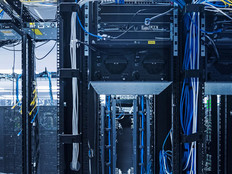Getting Data Center Consolidation Right
The Agriculture Department’s IT environment has long faced challenges such as low asset utilization, a fragmented demand for resources, duplicative systems, environments that are difficult to manage, and long procurement lead times. In 2008, these problems led the USDA to establish an Enterprise Data Center (EDC) policy and associated Data Center Consolidation Initiative (DCCI).
In 2010, when former federal CIO Vivek Kundra announced the Federal Data Center Consolidation Initiative, USDA was well positioned to meet this challenge. The department’s DCCI efforts were in alignment with what OMB was instructing federal agencies to do. The announcement of the FDCCI helped me and my team to achieve greater buy-in across the department for consolidating data centers and computing platforms.
Since it began its effort in 2008, the department has made steady progress toward consolidation. To date, seven USDA sub-agencies are completely hosted at EDCs, and eleven other sub-agency migrations are in progress. USDA has met its 2011 goal of closing 20 data centers.
USDA has focused its initial round of data center closures primarily in the District of Columbia, in part to help address critical shortages of office space. USDA metro D.C. data centers that are closed in 2011 will be repurposed as office space in 2012, reducing costs related to leasing additional office space. The department also has an aggressive schedule in 2012, during which it plans to close 33 additional data centers. By the end of the Data Center Consolidation Initiative in 2015, all USDA business applications will have been migrated to an EDC.
Moving into the fourth year of this effort, we have met and overcome numerous roadblocks. The two broad categories of issues USDA has faced involve technology and people.
Technological Challenges
- Planning: Each data center consolidation has its own unique challenges, and agencies shouldn’t underestimate the complexity of data center moves. This is especially true when it comes to taking into account application dependencies. Many USDA data center IT application portfolios and infrastructures include homegrown systems that have many supplemental or additional products or dependencies to other applications. To ensure successful migrations with minimal impact to customers, we have found that investing the time and effort into the accurate discovery and detailed planning of the closure projects pays great dividends when it comes to the execution phase.
- Assembling the right tools and team: In support of our data center consolidation effort, we have formed a core migration and consolidation team of senior IT professionals who have extensive backgrounds in successfully planning and executing data center migration projects. Additionally, we have procured (and continue to grow) a software toolkit to aid in and expedite the discovery and planning processes. With that said, no set of software tools can accurately map 100 percent of all of the application interdependencies. To ensure that we account for these interdependencies, this knowledge has to be gained through interviews of sub-agency subject matter experts and structured data collection from the people managing the applications.
- Moving to the cloud: To better facilitate business application migration, drive cost savings through standardization and achieve economies of scale, USDA has taken a cloud-first approach when consolidating data centers. The department has established (and is expanding) a portfolio of private cloud offerings to include the entire traditional IT stack of hardware and software infrastructure, middleware platforms, application system components, software services and turnkey applications. The USDA private cloud infrastructure as a service (IaaS) and platform as a service (PaaS) offerings serve as the target architecture for the vast majority of applications moving from closed data centers to the department's EDCs. These environments operate at average utilization rates of 55 to 65 percent, versus the 10 to 20 percent average utilization rates typically found across the department's legacy server environments. Additionally, substantial gains in uptime, security, recoverability, and reduced capital and operating costs are being realized.
People Challenges
The consolidation effort has faced a number of “people” challenges and has provided important lessons from them, primarily related to the workload of sub-agency staff and reluctance to change.
Closing or moving a data center is a resource-intensive project that affects agency IT departments that, in many cases, are already fully utilized. As previously stated, we recognized this as a factor early on and staffed a dedicated data center consolidation team to alleviate some of the resource constraints.
The more pervasive “people” factors have been resistance to change and a perception of lost power and control. It is important not to underestimate this resistance. Agencies that do so risk being blindsided by the innovative ways it can manifest itself. To overcome these issues, USDA found that it is critical to have the following:
- Strong support from the department’s executive leadership;
- Sound and mature business processes in place;
- Effective and consistent communications that deal with both the technical processes for an individual data center closure and that convey the benefits of data center consolidation.
In the end, sometimes the only way to achieve buy-in is to actually prove that you can do what you say you can do, so make sure you manage expectations well. Business management author Tom Peters said it best: “Formula for success: under promise and over deliver.”






